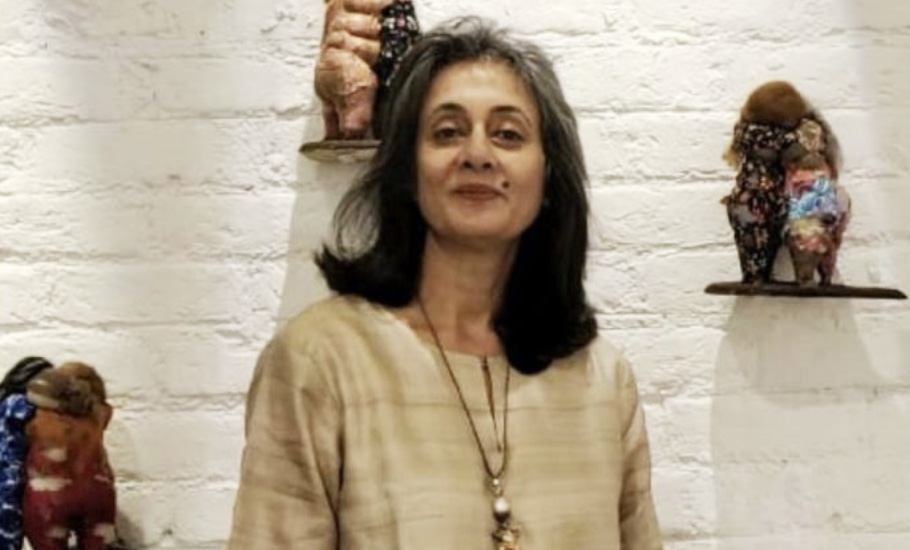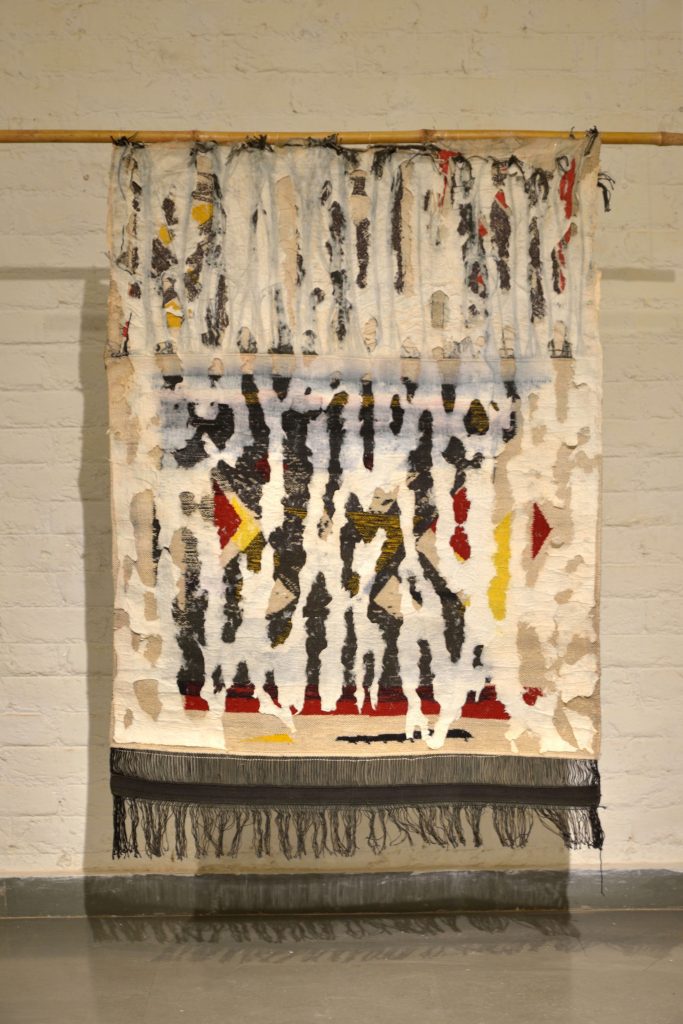
What running a gallery has taught me about the soft power of women in arts

It was through an act of serendipity that Threshold Art Gallery, which I have been running for the last 25 years, came into being. In 1997, my husband and I were living in Visakhapatnam (Andhra Pradesh) before we moved back to Delhi. During a trip to Odisha, I came upon Patachitra painters in Raghurajpur village and noticed that only international tourists had signed their visitors’ books. It made me think that we tend to take for granted what is in our own backyard. So, I invited them to Vizag to show their work; they not only exhibited their works, but stayed there and demonstrated the way they created soot and etched the palm leaf to draw complex delicate drawings.
When artist V. Ramesh visited the show, he was a little surprised that I had an exhibition of art without visiting the Faculty of Fine Arts at Visakhapatnam. It was the start of my lifelong friendship and association with the artist. During that time, artists Ravindra Reddy and Laxma Goud were part of the Andhra University and I met them there.
Also read: It took me a Korean film to understand my dead grandmother
They mentored me, encouraging me to start an annual artists’ workshop and residency in 1998, inviting around 40 senior artists like Paramjeet and Arpita Singh, Anjolie Ela Menon, Jogen Chowdhury, Bhupen Khakhar, amongst others, to stay and work at Visakhapatnam. They would give slide shows in the university, sharing their works with art students and giving them an exposure to a whole new world, followed by exhibitions at my gallery in Vizag.
The bigger canvas
In 2001, when I moved to Delhi, it was only natural that I set up a small gallery space (around 400 square feet) at Sarvodaya Enclave in New Delhi, where it is currently located. I was juggling my life between a family in Vizag and exhibitions at Shridharani Gallery (Triveni Kala Sangam), India Habitat Centre or Lalit Kala Akademi: wherever I could manage a booking. Interestingly, galleries at that time, as is the case even now, were run mostly by women, even though many artists were men.

My passion for travel, history and culture culminated in more workshops in culturally rich melting spots. “Angkor: The Silent Centuries”, a show held in 2005, came from one such endeavour: my travel to Cambodia’s temple complex Angkor Wat with 12 artists like Amit Amablal, Atul and Anju Dodiya, Jogen Chowdhury, Ghulam Mohammed Sheikh, Rameshwar Broota, Vasundhara Tiwari Broota, amongst others, helped me discover the culture of the forgotten historic art destinations. Those were the days when you were not distracted with modern gadgets and could soak yourself in the surroundings and learn from them. Several others followed, including a workshop at Pondicherry in a theatre campus, at Shantiniketan, Myanmar, Cambodia, Greece and China. We travelled from Shanghai across through Dunhuang Caves to the silk route in Kashgar and Urumqi in China. This helped build friendships and sensitised me to the thought process of the artists.
In 2005, I set up a gallery space at Lado Sarai, with others like Mamta Singhania (Founder Director of Anant Art) and Mala Aneja (director, Director, Gallery Art.Motif). This was before all the other galleries opened up and made the lanes of Lado Sarai the ‘East Village of Delhi’. It packed all the Modern and Contemporary artists into the lanes of a working-class area, putting the spotlight on younger artists alongside well-known names.
True to its name, Threshold gallery encourages artists to take that first step to enter the arena of display: the gallery. It brings them to the “threshold” of success. In the last 25 years, the gallery has been through several changes and seen much growth; all this while, quality and consistency have remained central to its existence.
The 2005-2007 art market boom was a very short and trying phase for us. The game changed: art became a commodity, and just as suddenly, the art market correction of 2008 happened. In retrospect, I think it was the best thing to have happened. It portrayed a more realistic picture, giving a chance to art collectors to realize that art was not just an investment for short gains. The artists were back to making work with a little more thought. The five years of recession that followed were a tough phase, but with a lot of grace and hard work, we survived that turbulent phase. Subsequently, the gallery participated in several fairs, including ARCO Spain, Best of Discovery Shanghai, Singapore Art Stage and the annual India Art Summit.
In my own space, at my own pace
I moved back to Sarvodaya Enclave in 2016. Now that I have my own space, I am not pressured to follow the external demands and I can have exhibitions for longer periods of time. Giving in to that pressure and following the market is, in many ways, the glass ceiling of the art world. I realized that in order to break it, one just has to set one’s own pace and enter one’s own terrain. In my own space, and at my own pace, I am also able to have exhibitions and works that were more experimental and pushed the physical limits of the space. A conceptual artist like Achia Anzi has found his market, and voice, through Threshold. Shows like “Bind/Bond,” “Kintsugi/Bakhiya”, and my participation at the India Art Fairs, have put forward more experimental work and abstracts by artists like Pandit Khairnar, the late Rajendra Dhawan, Shaurya Kumar and Rahul Inamdar. Over the years, we have showcased diversity of expression, material and demographic, presented through well-researched and sensitively curated exhibitions.
Also read: Women on screen: How Bollywood films censor the appetite of its heroines
The woman who played a crucial role in my art life is my mother, Todo Paintal, a painter herself. If it was not that initial exposure of visiting galleries with my mother, I might never have discovered my passion towards art. She is a powerhouse of passion. On her retirement at the age of 75 after running her own Montessori kindergarten school for nearly three and a half decades, she returned to her artistic passion with a diploma in Fine Arts at the Delhi Collage of Art (DCA), under the mentorship of Ashwani Kumar Prithviwasi. And exhibited her first solo show at the age of 80.
I hold sacrosanct my relationship with the gallery’s artists: they are an extension of my family. Where would the gallery be if we didn’t have the support of the artists. The women artists I have the highest respect for include Arpita Singh and Anjolie Ela Menon, the modernists. An artist like the late Priya Ravish Mehra, who I met through Dillu (Mrinalini Mukherjee) brought textiles, fiber and materials that emerge from nature to the fore, giving it a completely different set of poetics and meaning. She created a ‘symbiosis, which encourages tapestry to inhabit the paper and vanishes into cloth’.
Shanti Swaroopini, an introverted artist, worked during the pandemic and created mixed media works that resonated with humanity. Her unconventional sculptures are an explosion that seeks to valorize women and their personal experience. She needs to focus on her practice, which has been on the back burner because of her demanding job as a teacher.
Anindita Bhattacharya is a young artist whose prodigious skill allows her to create a tapestry of paper works that evoke the miniatures of the Mughals with witty and wonderful contemporary twists, bringing to mythological content a sharp and, in many ways, beautiful interpretation.
Tunty Chauhan is the founder of Threshold Art Gallery, which was established in 1997.


